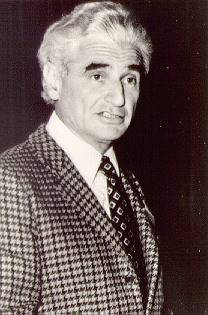Obituaries
Adrian M. Srb died 24 May 1997 at the age of 80. He received his Ph.D.
in biology from Stanford University in 1937, and spent most of his career on
the faculty of Cornell University. Srb's research with Neurospora crassa
included investigations of the one gene-one
enzyme hypothesis, cytoplasmic inheritance, and the genetics of ascus
development. He was elected in 1961 to the American Academy of Arts and
Sciences and in 1968 to the National Academy of Sciences. He co-authored
"General Genetics," a textbook that was the standard in its day.
Patricia St. Lawrence, Associate Professor of Genetics, Emerita,
University of California, Berkeley died Oct, 23 at the age of 74 of lung
cancer. Born in NYC, the daughter of Dr. and Mrs. William P. St. Lawrence, she
attended the Brearley School before enrolling at Bryn Mawr where she obtained
her A.B. degree. Dr. St. Lawrence received her Ph. D. from Columbia in 1952 and
pursued post-doctoral research at Yale and Stanford before moving to Berkeley
in 1959 as the first woman faculty member in the Genetics Department. She was
Chair of the Genetics Department from 1987-89 and retired in 1991. Her research
specialty was in biochemical genetics of fungi. Dr. St. Lawrence made early
contributions to understanding genetic suppressors, mutations in one gene that
moderate the effects of a mutation in a second gene.
Patricia St. Lawrence was a fervent advocate for minority and women's rights.
She was a major contributor to the first Academic Senate studies that led to
improved hiring and promotional opportunities for women and minority faculty at
Berkeley. Dr. St. Lawrence was a founding member of the Berkeley Faculty Union
in the 1960s and served as its president in the 1970s.
 Gabor Szabo passed away on the 13th of December, 1996, after a short
incurable illness. Dr. Szabo was founder and for 30 years head of the
Institute of Biology, University Medical School of Debrecen, Hungary, the
former rector of the University, Member of the Hungarian Academy of Sciences
and Arts, Member of the European Academy, founder and former President of the
Hungarian Genetical Society.
Gabor Szabo passed away on the 13th of December, 1996, after a short
incurable illness. Dr. Szabo was founder and for 30 years head of the
Institute of Biology, University Medical School of Debrecen, Hungary, the
former rector of the University, Member of the Hungarian Academy of Sciences
and Arts, Member of the European Academy, founder and former President of the
Hungarian Genetical Society.
After receiving his MD degree, in 1951 he joined the Pharmacology Institute of
the University. The Institute had strong ties to the University of Cambridge,
England, where he spent a year. He began to study the mechanism of the
formation of antibiotic resistance of Streptomyces griseus. Later on his
interest turned to the antibiotic production and cytodifferentiation of this
industrially important group of microorganisms. One of his main achievements in
this field was the identification, isolation and characterization of factor C,
a protein affecting cytodifferentiation in S. griseus. This regulatory
protein is highly conserved in evolution and seems to be present in all living
organisms.
In 1971 he had the privilege to work with the Nobel laureate E. L. Tatum at
the Rockefeller University. A significant result of that period was the
demonstration (together with N. C. Mishra) of the genetic transformation of a
eukaryotic organism Neurospora crassa. Later he identified a DNA uptake
stimulating factor, a protein, in N. crassa, which has also been found
universal in nature, being present in all organisms, with the same function.
Further study of both of these proteins remains the task of his followers. As a
university professor he was a real educator and an enthralling lecturer. In
consequence of his scientific interest, as part of the Medical Biology
curriculum he began to teach genetics as early as the late 1950's. To
appreciate the extraordinary significance of this step, let us not forget that
the dark era of Lisenko had not yet ended. Generations of students remember his
captivating lectures, brilliant argumentation, beaming intellect and elegant
appearance.
 Gabor Szabo passed away on the 13th of December, 1996, after a short
incurable illness. Dr. Szabo was founder and for 30 years head of the
Institute of Biology, University Medical School of Debrecen, Hungary, the
former rector of the University, Member of the Hungarian Academy of Sciences
and Arts, Member of the European Academy, founder and former President of the
Hungarian Genetical Society.
Gabor Szabo passed away on the 13th of December, 1996, after a short
incurable illness. Dr. Szabo was founder and for 30 years head of the
Institute of Biology, University Medical School of Debrecen, Hungary, the
former rector of the University, Member of the Hungarian Academy of Sciences
and Arts, Member of the European Academy, founder and former President of the
Hungarian Genetical Society.